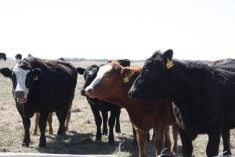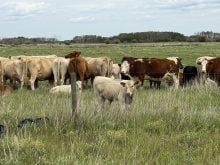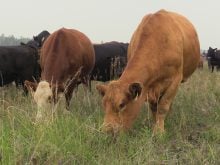This cattle market information is selected from the weekly report from Canfax, a division of the Canadian Cattlemen’s Association. More market information, analysis and statistics are available by becoming a Canfax subscriber by calling 403-275-5110 or at www.canfax.ca.
Fed market softens
The Western Canadian fed market seems to have reached its peak, with live prices softening the week ending June 20.
Read Also

VIDEO: Ag in Motion documentary launches second season
The second season of the the Western Producer’s documentary series about Ag in Motion launched Oct. 8.
Alberta fed steer prices fell by $1.42 per hundredweight, closing the week at $299.72 per cwt. Fed heifers eased $1.30 per cwt. lower to end the week at $297.26 per cwt.
From a seasonal perspective, fed prices are expected to trade steady to lower from July through October.
Dressed sales brought $500-504 per cwt. delivered, steady to $2 per cwt. lower than a week earlier. The majority of the cattle that traded were scheduled for delivery in the second half of July.
While buying interest was reported from all three Western Canadian packers, interest from U.S. packers was limited.
The Alberta cash-to-futures basis fell last week after a month above par. This week, it rebounded slightly to -$6.07 per cwt. However, this is significantly weaker than the five-year average for this time of year, which is +$6.97 per cwt.
Canadian fed slaughter for the week ending June 13 was 46,183 head. This was the third consecutive week where volumes ran eight to nine per cent higher than in 2024.
Year-to-date fed slaughter is down 6.3 per cent from 2024.
Canadian fed cattle and cow exports to the U.S. for the week ending June 7 was 7,150 head, five per cent above 2024. This is the first time it has run higher than last year since April.
Year-to-date exports are two per cent lower than in 2024.
A major packer pulled their bids in Ontario, and only a handful of cattle traded. A weighted average price couldn’t be established due to very light sale volumes.
Non-fed volumes keep rising
A significant increase in non-fed sale volumes through commercial auction facilities has been noted throughout the last few weeks.
All major packers were on the cow market during the week ending June 20, resulting in better competition.
Butcher cow prices continue to be relatively stable, averaging in the area of $230 per cwt.
Alberta cow prices for June have been averaging a premium of $15 per cwt. against the U.S. utility cow market. There have been reports of U.S. cows are being shipped into Canada to be put on feed to take advantage of this sizable premium.
Butcher bull prices dropped by $3 per cwt., with noteworthy discounts reported on lame or poorer-walking bulls.
For the week ending June 14, Western Canadian cow slaughter totalled just more than 4,200 head. This is the smallest slaughter volume for mid-June since 2013.
Overseas beef imports have been strong to make up for the shortfall in non-fed beef production. This includes the largest imports from Brazil since 2022 and the largest imports from New Zealand since 2015.
Forward delivery calf prices steady
Most feeder cattle on offer during the week ending June 20 were from backgrounding yards, though some grass cattle have started to hit the market.
Canfax reported that grass cattle are bringing a premium of $15 per cwt. compared to backgrounded feeders in some cases.
Forward delivery calf prices remain steady, trading at a premium to the spot market.
Alberta and Saskatchewan six-weight steers for fall delivery brought about $550 per cwt.
Last fall, six-weight steers averaged almost $400 per cwt., suggesting these steers are bringing almost $1,000 per head more than they did in 2024.
A few more cow-calf pairs were on the market, likely due to conditions becoming increasingly dry. Cow-calf pairs averaged $5,500 per pair.
Good demand has been noted for younger cows with larger calves at their side. Most pairs on the market were going back to ranches, and few, if any, were split up.
Cutouts remain stronger
U.S. cutout prices rose well above year-ago levels during the week ending June 20.
The Choice-to-Select spread was $19.20 per cwt., While this is $1.77 per cwt. above 2024, it is $3.67 per cwt. below the five-year average.

















